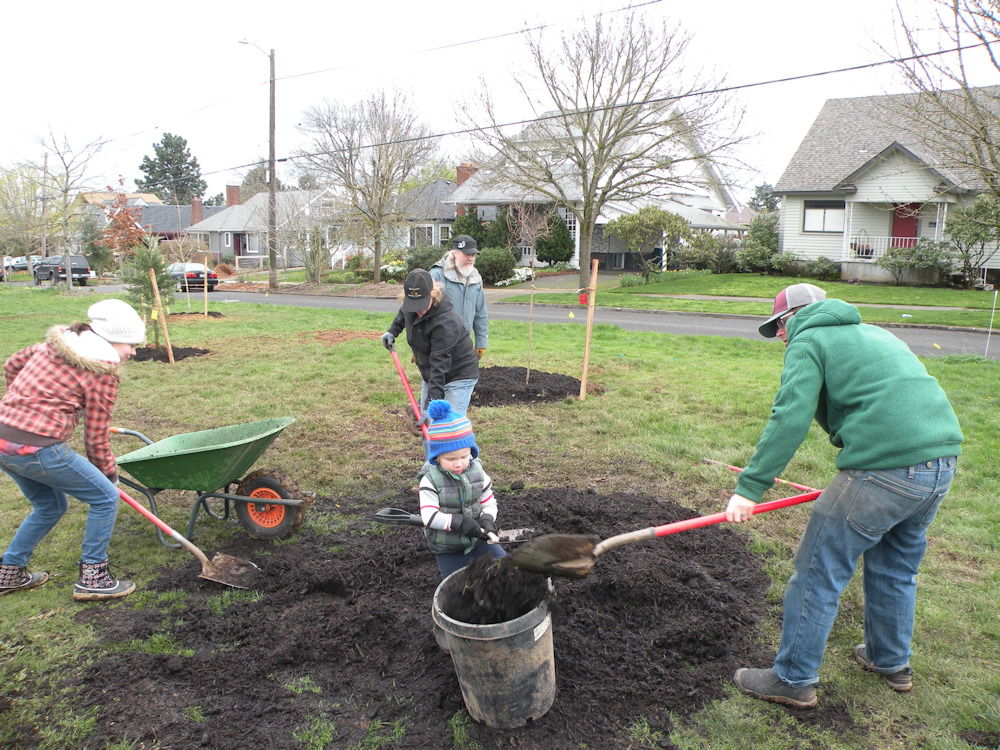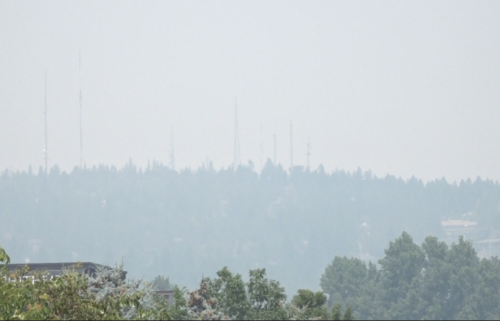April proclaimed Arbor Month in Oregon

SALEM, Ore. (KTVZ) — The first week in April was just not enough time to show how much Oregonians appreciate trees. So Gov. Kate Brown has proclaimed all of April as Oregon Arbor Month, allowing plenty of time for all the tree-related activities and commemorative plantings people want.
“I appreciate Governor Brown declaring April 2021 as Oregon Arbor Month, in recognition of the essential role trees play in the lives of Oregonians,” said Oregon State Forester Peter Daugherty. “There has long been a broad understanding of the economic and environmental benefits of our forestlands, but this proclamation helps highlight the equally vital social benefits that both rural and urban forests provide to the people of Oregon.”
Kristin Ramstad, manager of the Oregon Department of Forestry’s Urban and Community Forestry Assistance Program, points out that Oregon is a big state with a varied climate. “Tree plantings in the western part of the state are usually finishing up in early April while in many parts of eastern Oregon or at higher elevations, late April is more suitable for holding a tree planting. Extending the focus on trees through the entire month allows activities in all parts of the state to be included," she says.”
The non-profit organization Oregon Community Trees supported the move to a month-long recognition of trees. OCT President Samantha Wolf says the COVID-19 pandemic forced many towns and cities in 2020 to cancel in-person tree celebrations. “This year, people got creative and are planning many tree-related activities throughout the month, either online or with proper social distancing.”
One example Wolf cites is making a pop-up arboretum. “This is where temporary plaques are tied to public trees to identify them and inform passersby of their environmental benefits. Self-guided walking tours using flyers or phone apps are also popular in cities which have conducted inventories of their street or yard trees,” she says.
“April is also National Poetry Month, so some places are considering holding contests for poems on the theme of trees. Others are encouraging tree-related art contests,” Wolf adds.
Ramstad says Arbor Month is the perfect time to reflect on the contribution trees make – to our physical, mental and emotional health, to the livability of our communities, to our safety, the quality and quantity of our air and water, and to our economy.
Trees have always been a vital part of the lives of people in the Pacific Northwest, says Ramstad. “Long before white settlers arrived, trees were woven into the fabric of Native American life, providing food, clothing, materials for houses and basket-making, canoes, firewood and other necessities,” she says.
Later, when settlers from the east made the long, difficult journey to the Oregon territory, seeds and cuttings of fruit and nut trees were among the precious items they carried in their wagons. And although settlers cleared trees for farming and for wood to build their expanding cities, they also planted trees where they did not naturally grow, such as on the Columbia Plateau, and in the new towns and cities.
“Trees are becoming even more important to the two-thirds of Oregonians who live in cities and towns as climate change raises concerns about dangerous levels of summer heat in urban areas,” says Ramstad. “Many communities are recognizing the value of tree canopy in helping moderate temperatures both with their shade as well as by putting into the air water that they pull from the soil. And with extreme weather events considered more likely, trees are being recognized for the role they play in slowing rainfall runoff and erosion.”
Ironically, climate change is putting trees at greater risk even as we need their services more than ever. “With milder winters, a wider range of tree pests may establish themselves in Oregon. And longer periods of hot, dry weather are stressing and even killing trees, especially those from summer-rainfall regions,” says Ramstad.
“April is usually when people should start giving 10 to 15 gallons of water once a week to young trees three years and under,” she says. “But even older, non-native trees can benefit in summer from occasional deep waterings. They’ll be less stressed and grow faster.”
The proclamation was the result of more than a year of collaboration between the Oregon Department of Forestry’s Urban and Community Forestry Program and Oregon Community Trees, a non-profit organization that promotes healthy urban and community forests. Read the full text of the proclamation here.



